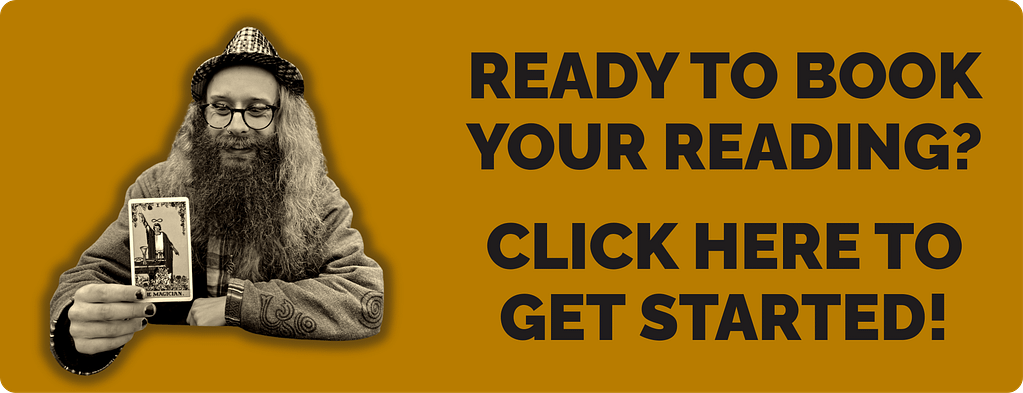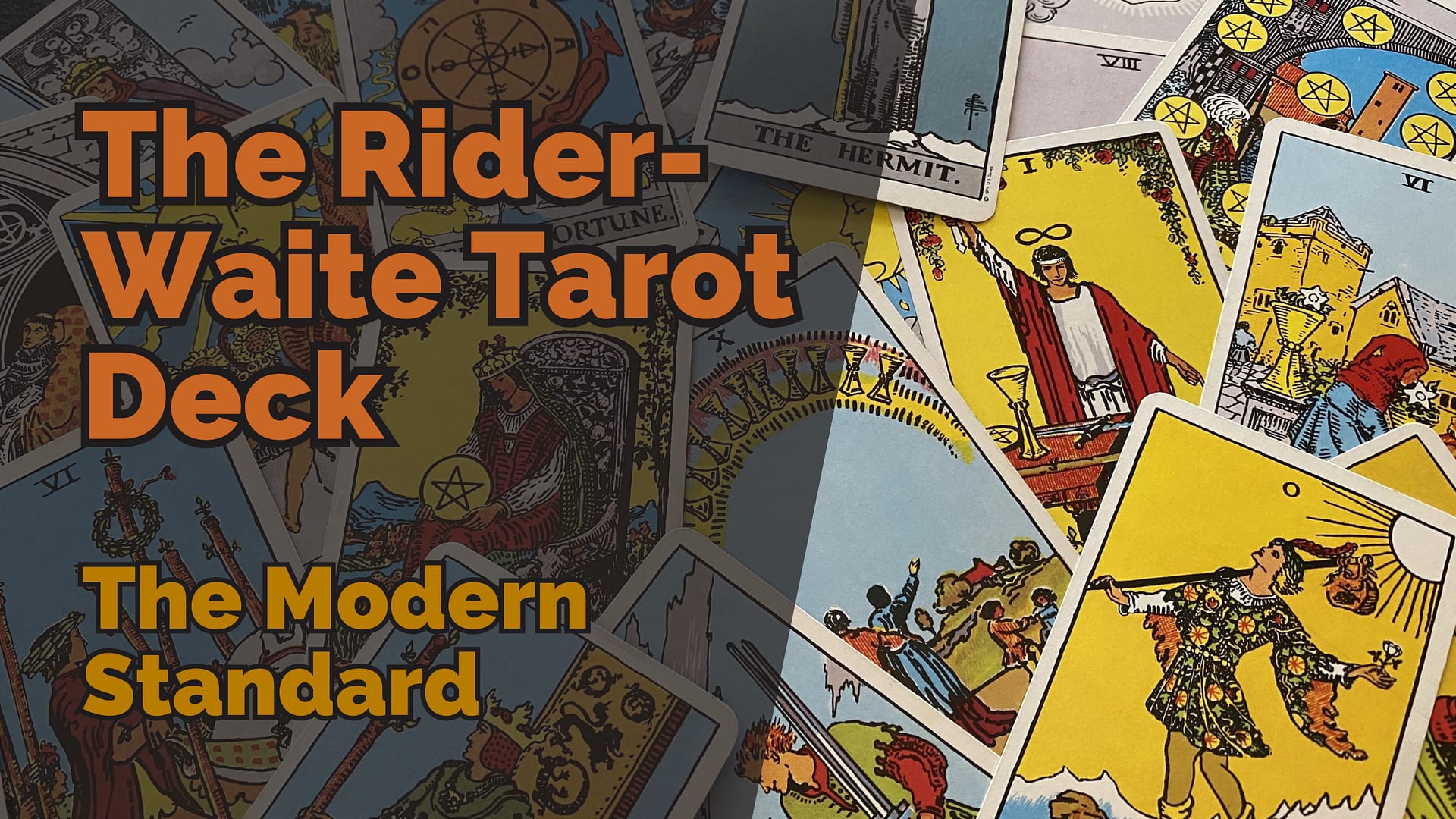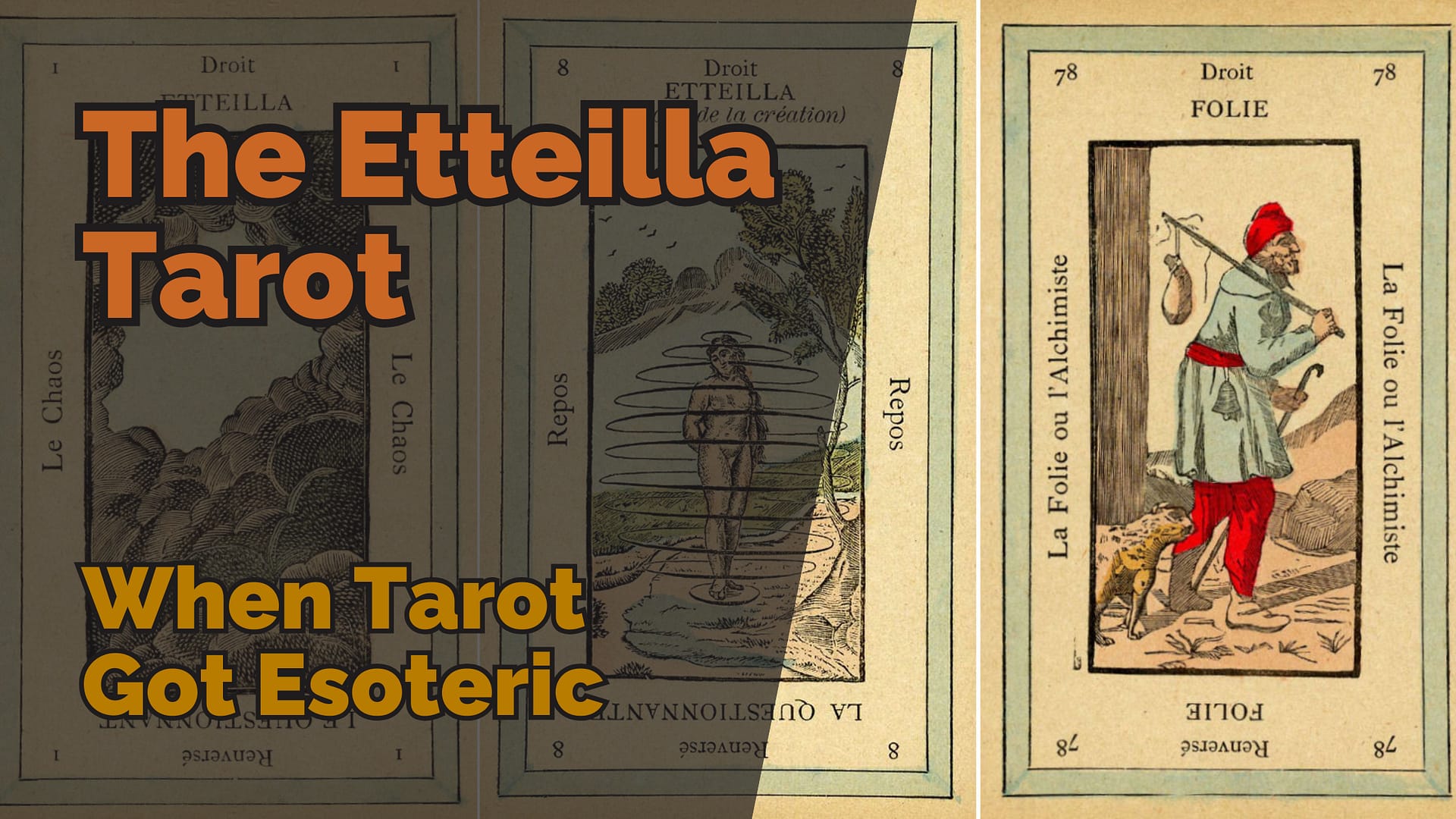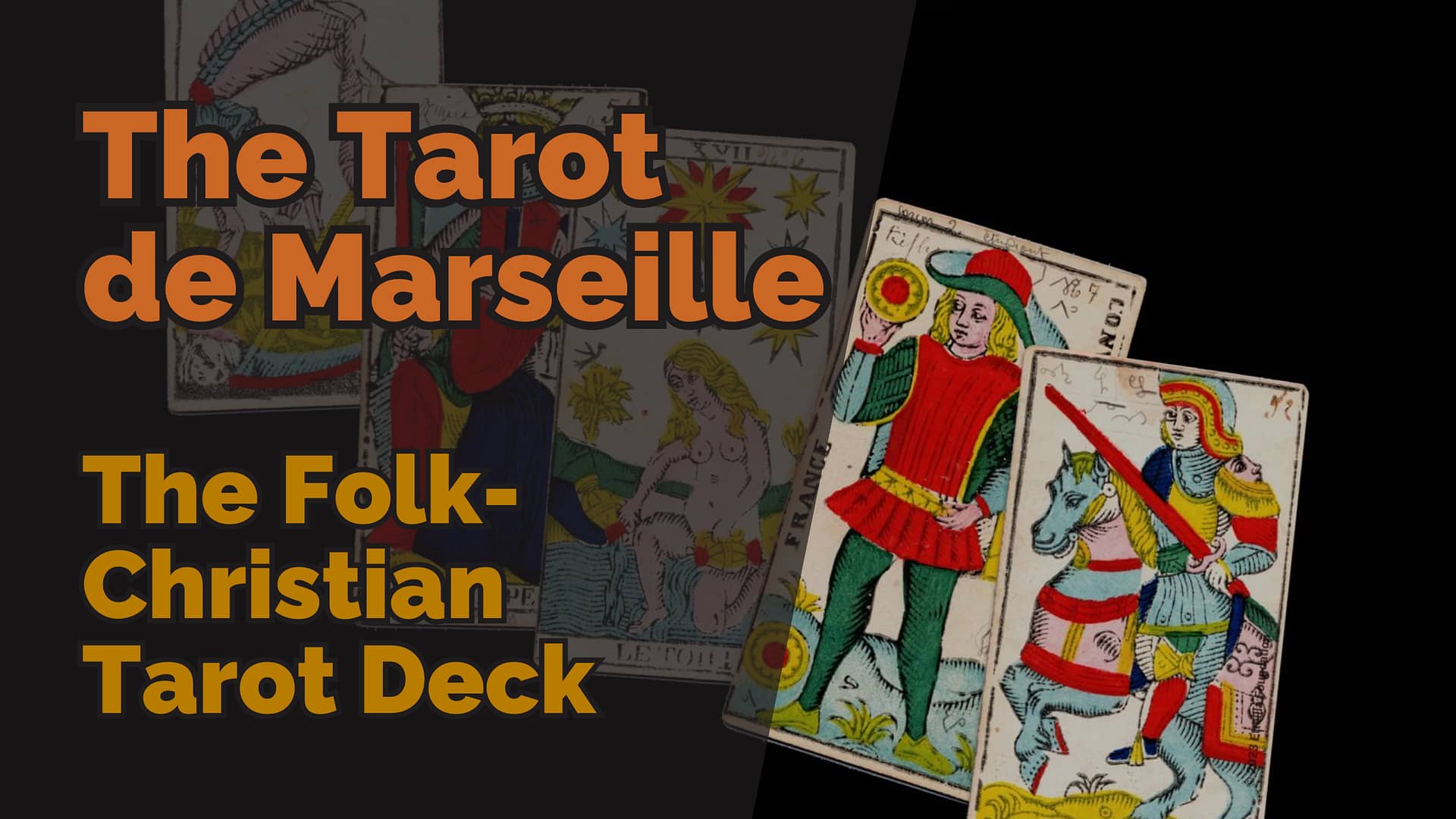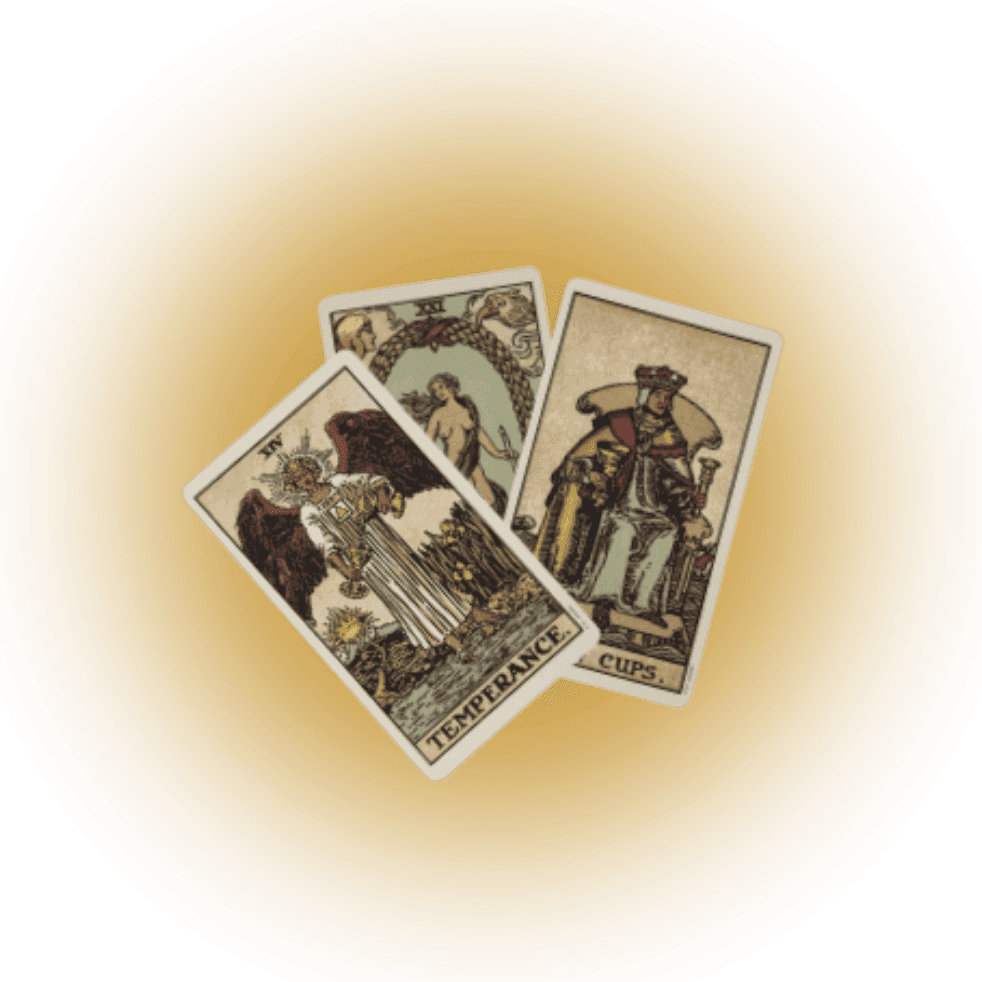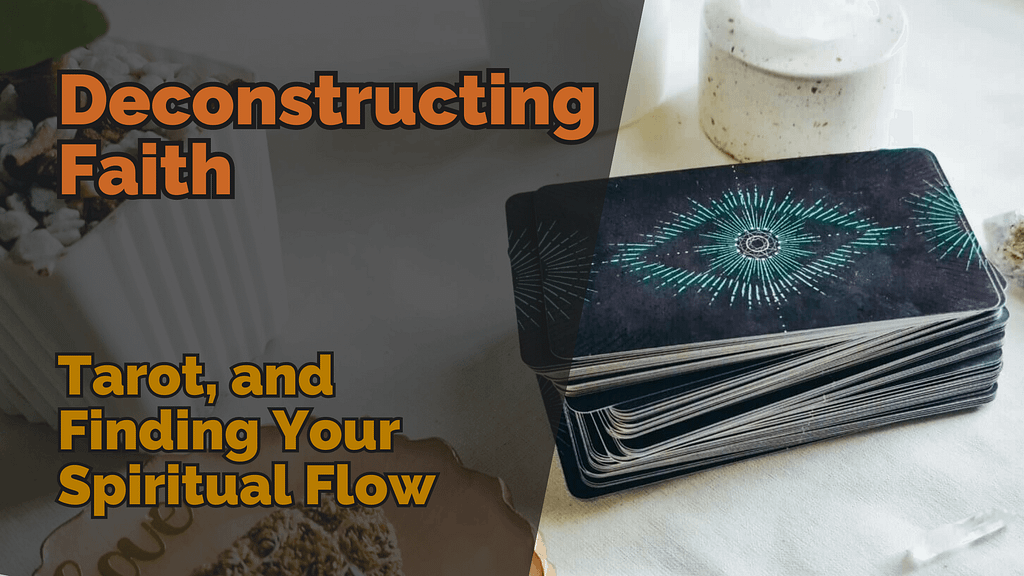
Table of Contents
Introduction: Tarot, Patterns, and the Journey to Understanding
What if everything you thought you were resisting was actually a part of you? I know, that sounds wild, but stick with me. We spend so much time fighting against things—our situations, our beliefs, the things that feel out of our control. What if those things weren’t obstacles to overcome but parts of a bigger spiritual flow that we’re all connected to? What if, instead of resisting, we learned how to move with it?
That’s the kind of question I find myself asking, whether I’m laying out tarot cards or reflecting on where my life’s taken me. I’m a tarot reader now, but it wasn’t a straightforward path. For the first two decades of my life, Christianity was my way of understanding the world. I grew up in the church, surrounded by the language and rituals that shaped my sense of the divine. Back then, everything felt solid. The idea of God, heaven, hell, sin—there were clear lines and rules. It was a system that made sense when I was younger because it gave me structure, a framework to understand life and my place in it. Christianity gave me answers to the big questions I hadn’t even thought to ask yet.
Between the ages of 18 and 24, I went through a process of deconstructing what I had been taught, and the more I pulled away, the more I realised how much of my belief system had been built on a foundation that no longer worked for me. By the time I hit 24, I had left the church completely. That was a big turning point, but it didn’t mean I’d stopped feeling connected to something bigger—I just no longer had the same framework to define it. At 26, I went on a meditation retreat and began to rediscover my intuition. That’s when I realised that the thing I’d been connecting to through meditation felt like the same connection I used to have with the Holy Spirit.
Then, when I was 28, I discovered tarot and got my first deck. Tarot became a new way of understanding the patterns of life. When I lay out the cards, I’m not just seeing random images—I’m seeing reflections of something bigger. Tarot helped me see that the things I thought I was fighting against were actually part of the same spiritual flow I was trying to find.
This blog post is about that journey—moving from Christianity, through deconstruction, to tarot, and learning to see the patterns in everything. From the cards in a tarot spread to the mess in my bedroom, I’ve started to recognise that we’re all part of something much bigger. The question isn’t whether we’re part of it; it’s whether we’re moving with it or against it. And that’s what I want to explore here: How do we stop resisting the flow of life and start moving with it?
Part One: The Patterns of Tarot and Life
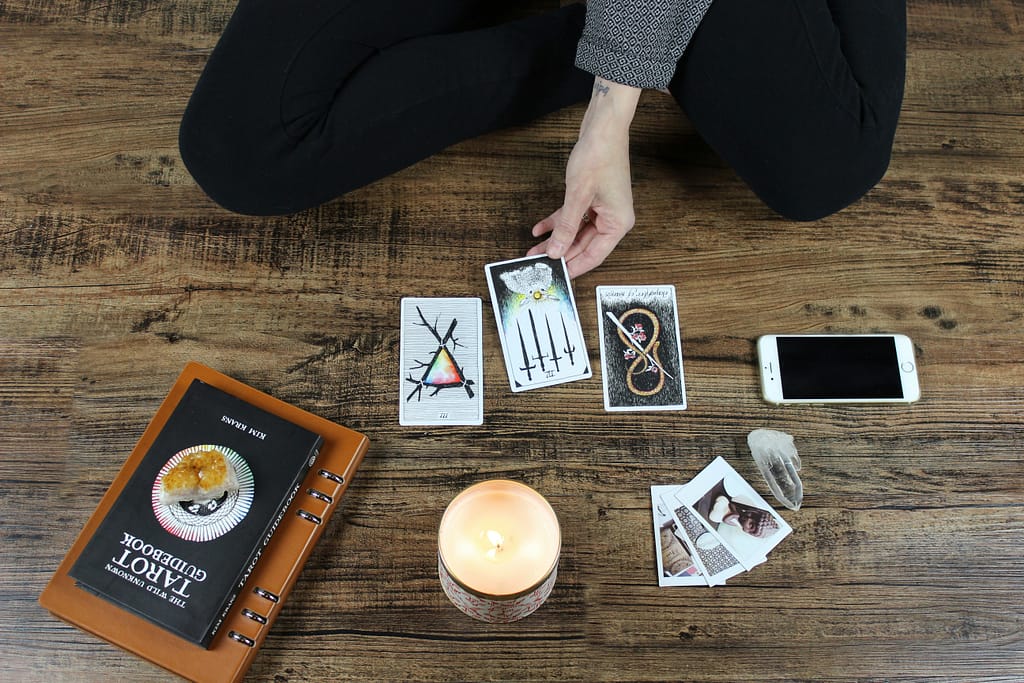
The Patterns Tarot Reveals
When I first started reading tarot at 28, I wasn’t looking for some kind of magical answer. I was just curious. I wanted to understand why the cards resonated with people the way they did. What I didn’t expect was how quickly I’d start seeing the same patterns I had been noticing in life reflected back at me through the cards. It was almost like they were holding up a mirror to the things I’d been struggling to figure out, but instead of giving me clear answers, they were pointing me toward the patterns that were already there, waiting for me to notice.
The thing about tarot is, it doesn’t tell you anything you don’t already know—at least, not in the way people expect it to. The cards reveal the patterns that are operating in the background of your life, the things you might be ignoring, the connections you haven’t made yet. They act as a guide, but they don’t do the work for you. That’s why it works. It’s not about predicting the future, it’s about giving you the tools to see the patterns that are already present, even if you don’t fully understand them yet.
How Tarot Reflects Life’s Bigger Patterns
Tarot has this way of framing life in a way that makes sense when nothing else seems to. Take a card like The Tower, for example. People are always terrified of The Tower—it’s this big image of destruction, disruption, and chaos. But what The Tower represents isn’t inherently “good” or “bad”—it’s about things outside of our control shifting and falling apart. The Tower is a symbol of the patterns collapsing, and how we experience that change depends on how we move through it. Whether we resist it or go with the flow, these shifts are going to happen regardless. It’s not about whether the destruction is positive or negative, but how we adapt to the inevitable.
And that’s true for almost every card in the deck. Each one is a representation of some aspect of the human condition, whether it’s the need for stability (like The Emperor) or the process of self-discovery (like The Fool). But more than that, when you lay them out in a spread, they show how those individual pieces fit into the larger pattern of your life. One card on its own is interesting, but it’s when they come together in a spread that the bigger picture starts to reveal itself.
Seeing Patterns in My Bedroom
It’s kind of like when I look around my bedroom. My bed, for example, isn’t just a bed. It’s a bunch of different things—a frame, a mattress, pillows, blankets—that come together to serve one purpose. Each part has its own role, but it’s only when they’re working together that it becomes something functional. And that’s true of everything in the room. My yoga mat, my wardrobe, my whiteboard—all these things are made up of smaller parts that contribute to a larger purpose.
In the same way, tarot cards are individual symbols, but it’s the way they work together in a spread that creates meaning. The cards reflect the interconnectedness of life—the idea that nothing exists in isolation, and everything is part of a larger system. Just like the objects in my room, each card represents something on its own, but the real insight comes when you see how those pieces fit into the bigger picture.
Recognising the Spiritual Flow
What tarot has taught me, more than anything, is that everything in life is part of a spiritual flow. We spend so much time trying to fight against things—our situations, our relationships, our emotions—without realising that these things aren’t separate from us, they’re part of the same flow we’re in. The cards reflect that. They show you where you’re resisting and where you need to let go. They help you see where the patterns in your life are out of sync and where they’re flowing naturally.
And that’s the point, really. It’s not about finding one definitive answer to every problem—it’s about seeing the bigger patterns and figuring out how to move with them, instead of constantly pushing against them. Life, like tarot, is about recognising the flow. And when you start to see that, everything gets a little easier. Not because your problems magically disappear, but because you start to understand how they fit into the bigger picture.
Part Two: Deconstructing My Christian Faith
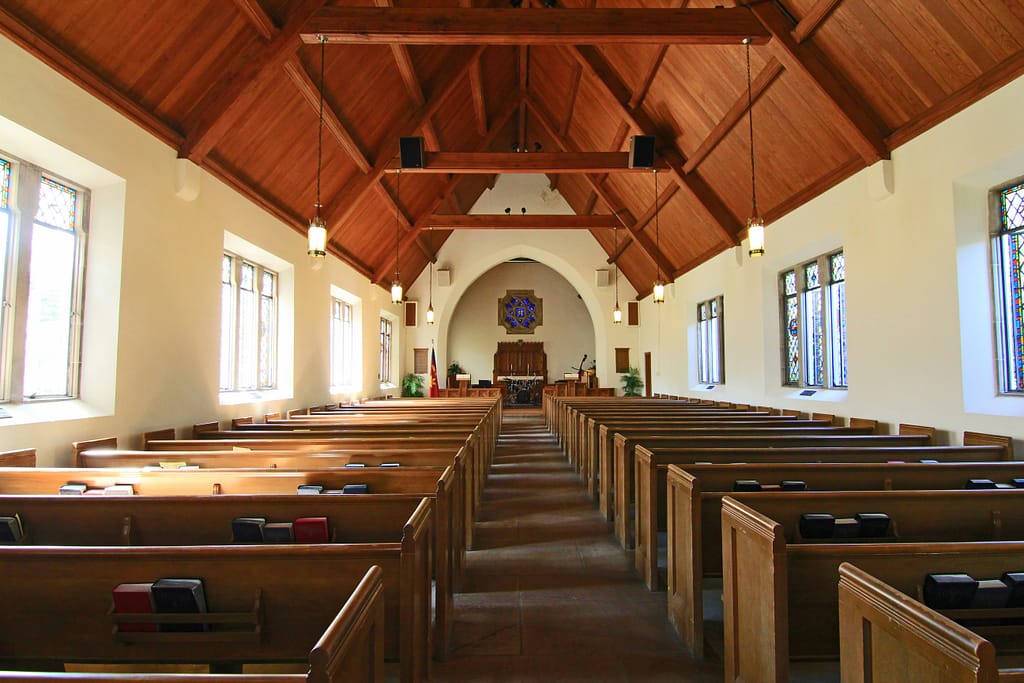
Growing Up in the Church
For the first two decades of my life, Christianity was my way of understanding the world. I grew up in the church, surrounded by the language and rituals that shaped my sense of the divine. Back then, everything felt solid. The idea of God, heaven, hell, sin—there were clear lines and rules. It was a system that made sense when I was younger because it gave me structure, a framework to understand life and my place in it. Christianity gave me answers to the big questions I hadn’t even thought to ask yet.
But as I got older, those answers didn’t seem to fit as well anymore. I started questioning, pulling at the threads of my faith, and things began to unravel. From around the age of 18 to 24, I went through a process of deconstructing what I had been taught, and the more I pulled away, the more I realised how much of my belief system had been built on a foundation that no longer worked for me.
The Limits of the Framework
The church had always told me that Christianity held all the answers, but as I began to ask deeper questions, I found that those answers were limited. It wasn’t that I stopped believing in something bigger—I never lost that sense of connection to the divine. But Christianity, as a framework, started to feel too rigid, too small to hold everything I was coming to understand. There were things about the way God was framed, the way people were treated, the strict binaries of good and evil, that didn’t sit right with me anymore. It was like trying to squeeze my soul into a box that was way too small.
I began to feel frustrated with how Christianity presented God—as this ultimate, unchanging truth that couldn’t be questioned. The more I questioned, the more I realised that the God I was being told to worship didn’t align with the deeper sense of connection I felt. There was something more expansive out there, something that didn’t fit neatly into the doctrines and dogmas I had grown up with.
Stepping Away to Figure Things Out
By the time I was 24, I had completely left the church. It wasn’t an easy decision, and it wasn’t something that happened overnight. It took years of wrestling with my beliefs, of breaking down everything I thought I knew, and then standing in the rubble trying to figure out what was left. I needed to step away from it all to figure out who I was without that framework.
For a while, I wasn’t sure what I believed. I still felt connected to something—there was always that deeper sense of something bigger than myself—but I no longer had the language or structure to define it. And honestly, I didn’t need to define it right away. I just needed space to breathe, to exist without trying to squeeze myself back into that too-small box.
Part Three: Finding a New Connection to the Divine

Meditation, Pendulums, and Rediscovering the Flow
After leaving the church at 24, I felt untethered, like I had cut loose from the structure that once gave my life meaning. But that didn’t mean I had stopped feeling connected to something bigger. I was still searching, still feeling that pull toward the divine, but without the framework of Christianity, I had to figure out a new way to make sense of it all. At 26, I went on a meditation retreat, and it was during that time that I started to reconnect with my intuition in a way I hadn’t felt since leaving the church.
Around that same time, I was introduced to pendulums—a tool that, for me, became a way to listen to my intuition more clearly. It wasn’t about the pendulum itself moving in some magical way, but more about how it tapped into my subconscious. It allowed me to bypass the noise in my brain and listen to what my intuition was already trying to say. When the pendulum swung in response to my questions, I wasn’t consciously moving it; it was my subconscious connecting to that larger sense of intuition, which I now see as part of the all—what I once called God or the Holy Spirit.
This was the first time I truly began to see that the divine wasn’t something I had to reach for through a specific belief system. It was something I could connect to directly through myself. The pendulum became a tangible way to hear that inner voice, to recognise the spiritual flow I was a part of, and to understand that this connection to the all didn’t require me to follow any particular rules.
Discovering Tarot at 28: A New Way to See Patterns
Then, when I was 28, I discovered tarot. At first, it was just another tool I was curious about. But as I started working with the cards, I realised that tarot, much like the pendulum, was a way to access that same divine flow. Tarot was about more than just interpreting images or symbolism—it was a way to bypass my conscious mind and connect with the patterns that were already present in my life.
The cards worked in much the same way the pendulum had. They allowed me to step back from overthinking and see the connections that were already there, waiting for me to notice. Tarot wasn’t about giving me answers, but about reflecting the patterns that were unfolding, showing me where I was in the flow, and where I might need to stop resisting and start listening.
Tarot as a New Framework for Understanding the Divine
By the time I started reading tarot, I had realised I didn’t need a rigid belief system to connect with the divine. I didn’t need to be tethered to one path, one doctrine. I had learned to trust my intuition, to recognise that the connection I was searching for had been within me all along, whether it was through meditation, pendulums, or tarot.
Tarot, in particular, became a new framework for understanding the divine—not a set of rules or ultimate truth, but a way to tap into the patterns that were already moving through my life. It showed me how to navigate those patterns, to see where the spiritual flow was taking me. Tarot doesn’t demand belief or loyalty—it simply reflects what’s already there. It’s a tool for seeing the bigger picture, for recognising the flow, and for understanding that being untethered isn’t about being lost. It’s about realising that we’re part of the all, and the flow will carry us if we learn to move with it.
Part Four: We Are All Part of Something Bigger

Recognising Our Place in the Flow
One of the biggest realisations I’ve had is that everything we do has an impact on the world around us. We’re not isolated beings—we’re part of a larger flow, and our actions ripple out in ways we might not always see. It’s not about being perfect or trying to live in some idealised way, but about being aware of how our choices affect the bigger picture. For example, I try to live in a way that does as little conscious harm as possible. For me, that includes being vegan, but it’s not about following some rigid set of rules. It’s about making choices that align with my values and doing what’s within my power. And I recognise that not everyone’s path will look the same.
It’s not about the labels or the categories we place ourselves in—it’s about recognising that we’re part of something much bigger. Every choice we make, no matter how small, has an effect on the spiritual flow we’re all moving through. It’s about moving with intention, not just for ourselves, but for the world we’re part of.
It’s Not Me vs. the Universe; It’s All Us
When I was in the church, the world was framed as “me, others, and God.” There was always this separation—like there were three distinct entities: me, the people around me, and God, up there somewhere. And as I moved away from Christianity, I noticed that a lot of other spiritual systems or perspectives tend to frame it as “me and the universe,” like the universe is this external force we’re trying to navigate, separate from us.
But the more I explore this idea, the more I’m starting to open up to something different. It’s not “me, you, and God,” or “me and the universe.” It’s all us. Everything is connected, and how we frame it really depends on perspective. It’s like looking at the objects in my room—sometimes I might see things as “me, my bed, and my room.” Other times, I see it all as one—the room, the bed, and everything in it, all part of the same space. It’s just a matter of how I’m choosing to look at it.
The same goes for life. I could think of it as “me, the boat, and the water” when I’m sailing, or I could recognise that we’re all in the same environment, part of the same spiritual flow. It’s about perspective, and different perspectives can be useful at different times. But it becomes problematic when we create too much separation. If I frame it as “me and the universe,” it’s easy to think that what happens in the universe is outside of my control and not my responsibility. But we are all part of the same system, connected to everything else, so even if I’m not responsible for a storm in the sea, I’m still affected by it. The same is true for life—just because we don’t control everything doesn’t mean we’re not part of it.
Finding the Balance Between Control and Surrender
This brings me back to the idea of the flow. There are things in life that are beyond our control—just like being in a boat on the sea, we can’t stop the waves. But how we move through those waves, how we navigate the flow, is up to us. It’s not about passively letting bad things happen to us or ignoring the injustice we see around us. It’s about recognising where we have influence and where we don’t, and learning to work with the flow rather than resisting it.
When we start to create divisions between ourselves and the world, we miss the bigger picture. Just like in tarot, where each card represents a part of the whole story, we are part of the systems and patterns we live in. We can influence those systems—whether it’s calling out injustice or creating change in our communities. It’s not about being separate from the flow; it’s about recognising our place in it and choosing how we move through it. When we stop resisting, we can start making real change.
Part Five: Jesus, Buddha, and Tarot—All Pointing to the Same Truth
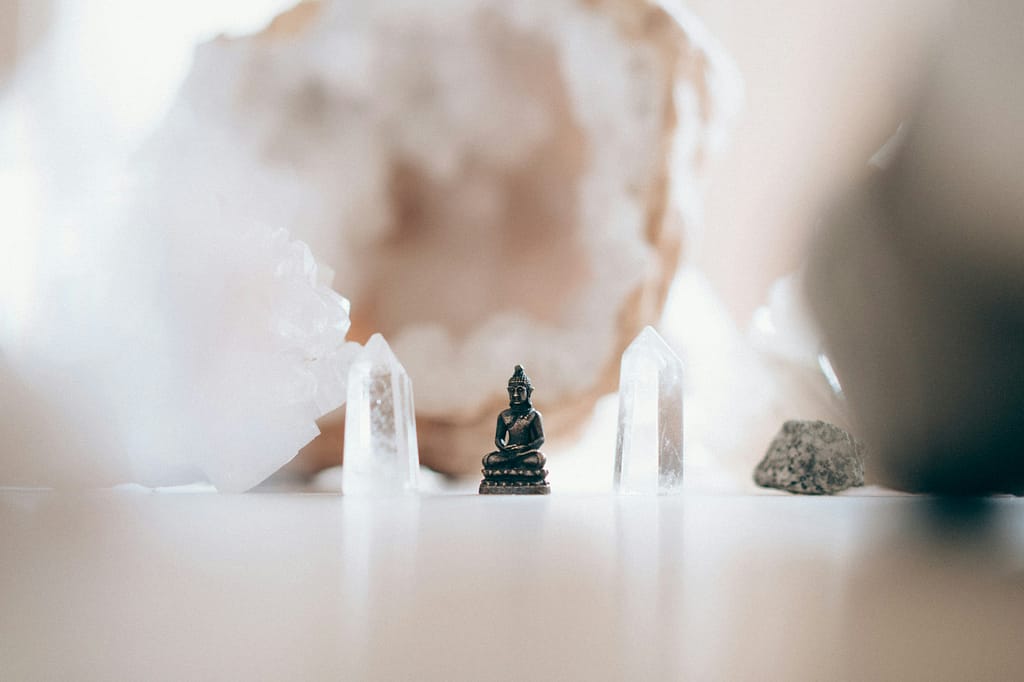
Jesus and the Message of Connection
Looking back on my time in the church, one of the things I still resonate with is the message of connection that Jesus preached. For Jesus, it wasn’t about following a specific set of rules or aligning with a particular group—it was about love, compassion, and recognising the shared humanity in everyone. He wasn’t just speaking to his own people; his teachings reached far beyond that. It was about transcending the boundaries of tribe, religion, and belief, and recognising that we’re all part of something bigger. The story of the Good Samaritan, for example, isn’t just about being kind to your neighbour—it’s about seeing beyond the divisions we create between ourselves and others.
The Wise Men: Different Paths Leading to the Same Truth
The wise men in the nativity story are a perfect example of this idea of connection. These were scholars, astrologers—people from different traditions and cultures—yet they were drawn to Jesus. They came from different parts of the world, often thought to represent Europe, Asia, and Africa, which to me highlights the universality of the truth Jesus was speaking to. They weren’t part of the Jewish faith, but they recognised something significant in the stars and followed that pattern to him.
This shows that the truth Jesus embodied wasn’t just meant for one group of people or one religious tradition. The wise men were living proof that different paths can lead to the same truth. Whether it’s through astrology, mysticism, or some other practice, they were able to recognise something divine and follow it. In the same way, we can see that spiritual truths aren’t exclusive to one system—they appear in different forms, whether through Christianity, Buddhism, or other spiritual traditions. The wise men represent that journey of convergence, where different paths ultimately lead to the same source.
Buddha’s Teachings and the Same Message
Buddha’s teachings, though from a different tradition, echo this same message of connection and awareness. Buddhism emphasises mindfulness, compassion, and being fully present with what is—seeing the world as it is and accepting that everything is interconnected. Just like Jesus, Buddha pointed people toward understanding their place in the larger flow of life. Both traditions, at their core, are about recognising the oneness of existence and moving with the flow instead of against it.
Tarot, The Hierophant, and The High Priestess
In tarot, this same idea of spiritual systems and inner truth is mirrored in the cards. Take The Hierophant, for example. The Hierophant represents established traditions—systems of belief that we inherit, like Christianity, Buddhism, Judaism, or Islam. These are frameworks that help us understand the world through patterns that have been passed down through generations. They give structure and guidance, much like the traditions that Jesus and Buddha both worked within and challenged.
But then you have The High Priestess, who represents something deeper and more personal—our inner ability to see the patterns within ourselves. The High Priestess doesn’t rely on external systems or teachings; she trusts her own intuition, her own connection to the divine. Together, these cards reflect the balance between the outer world of tradition and the inner world of personal insight. Just as the wise men came from different traditions to find the same truth, the Hierophant and the High Priestess show us that spiritual understanding can come from both inherited systems and personal intuition.
The Universality of Spiritual Truths
What the wise men’s journey, Jesus’ message, Buddha’s teachings, and tarot all have in common is this: spiritual truth isn’t exclusive to any one tradition. The patterns are there, whether you’re looking at the stars, meditating on your breath, or laying out a tarot spread. It’s all about recognising the connections, seeing the flow, and understanding that the divine is woven through everything.
We don’t need to be tied to one path to find spiritual truth. The wise men weren’t part of Jesus’ tradition, yet they found their way to him. In the same way, tarot, meditation, or any other practice can help us see the bigger picture. It’s about being open, about recognising that the patterns of life show up in different forms, but they’re all pointing to the same truth: we are all connected, we are all part of the flow, and the divine is something we’re all moving through, whether we call it God, the universe, or something else entirely.
Conclusion: Recognising the Flow and Moving With It
So, what if everything you thought you were resisting was actually a part of you? That’s been the question at the heart of this journey, and the answer, as I’ve come to understand it, is simple: it is. We spend so much time fighting against things—our situations, our beliefs, the things outside of our control—without realising that they are part of the same spiritual flow we’re in. The patterns are always there, whether we see them or not. It’s up to us to decide whether we’ll resist them or learn to move with them.
From the wise men recognising the truth in the stars, to the teachings of Jesus and Buddha, to the cards laid out in a tarot spread—it’s all pointing to the same thing. We are connected to everything, part of something bigger. The divine, the universe, whatever you want to call it, is always flowing, always present. The question is whether we choose to see it and move with it.
If you’ve been feeling like you’re resisting the flow, like you’re struggling to make sense of the patterns in your life, maybe it’s time to stop fighting and start listening. Tarot has been a tool that’s helped me recognise those patterns, and it might be able to help you too. If you’re ready to explore the flow in your own life, I’d love to help you through a tarot reading. Sometimes all it takes is a little reflection to see what’s been in front of you all along.
Click here to book a tarot reading and let’s figure out your spiritual flow together.


